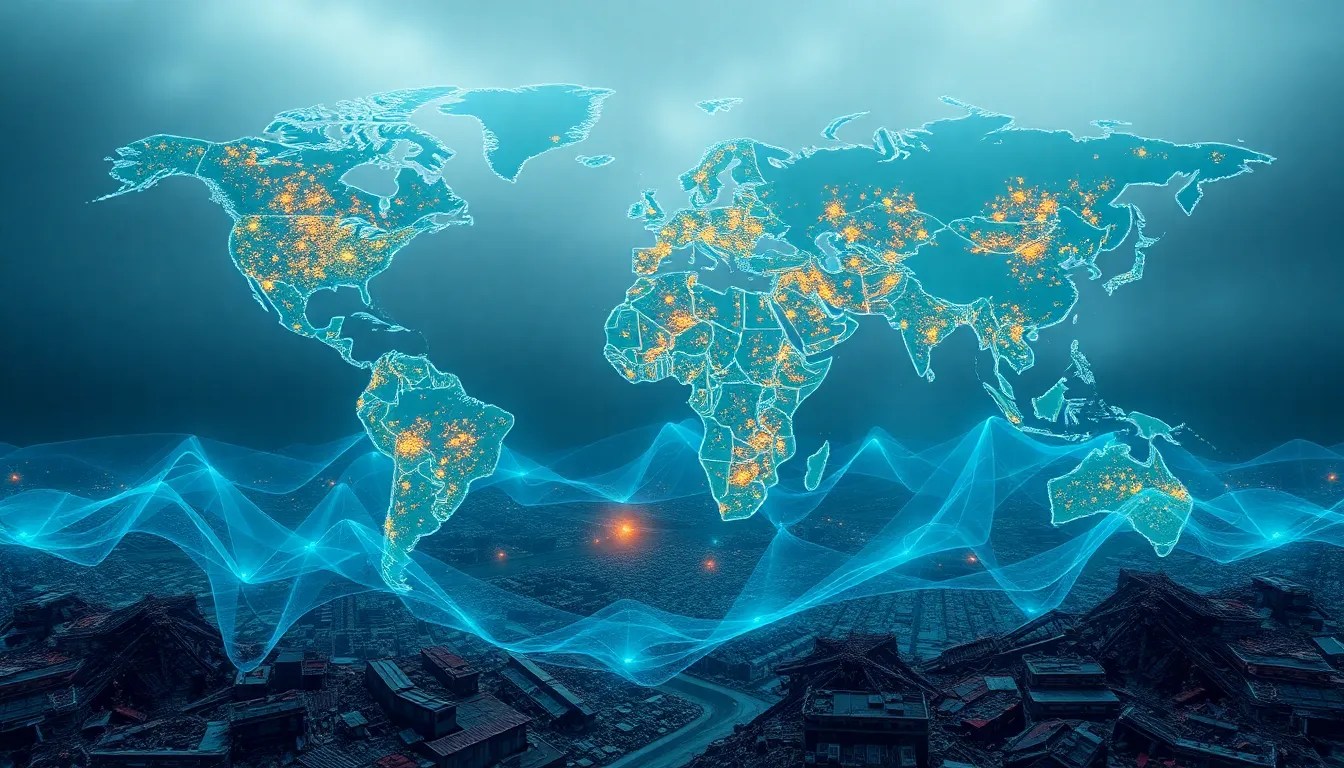The Role of Data Visualization in Enhancing Disaster Response
I. Introduction
Data visualization refers to the graphical representation of information and data. By using visual elements like charts, graphs, and maps, data visualization tools provide an accessible way to see and understand trends, outliers, and patterns in data.
In the context of disaster response, data visualization plays a critical role in enhancing situational awareness and improving decision-making processes. By translating complex data into visual formats, responders can quickly grasp essential information that can save lives and resources.
This article will explore the importance of data visualization in disaster response, examining the phases of disaster management, the evolution of visualization techniques, effective case studies, and future trends that will shape the way we respond to disasters.
II. Understanding Disaster Response
A. The phases of disaster response
Disaster response can be broadly categorized into three main phases:
- Preparedness: This phase involves planning and training to ensure that communities are ready to respond to disasters.
- Response: This is the immediate reaction to a disaster, aiming to save lives, protect property, and meet basic human needs.
- Recovery: The long-term phase focused on restoring and improving the affected area, including rebuilding infrastructure and supporting the community.
B. Challenges faced during disaster response
During any disaster, responders face numerous challenges, including:
- Limited resources and funding
- Communication breakdowns among agencies
- Rapidly changing conditions on the ground
- Inaccessibility of affected areas
C. The need for effective communication and decision-making
Effective communication and timely decision-making are crucial during disaster response. Data visualization aids in these processes by providing clear and concise graphical representations of complex data, allowing for faster and more informed decisions.
III. The Evolution of Data Visualization Techniques
A. Historical context of data visualization in emergencies
Historically, data visualization in emergencies was limited to basic charts and graphs. However, the need for more sophisticated tools has emerged as disasters have become more complex and data-driven.
B. Modern advancements in visualization technology
Today, advancements in technology have led to the development of interactive and real-time visualization tools. Geographic Information Systems (GIS), augmented reality (AR), and mobile applications have transformed the landscape of disaster response.
C. Types of data visualization tools used in disaster response
Various tools are employed in disaster response, including:
- Dashboards that consolidate multiple data sources
- Heat maps for tracking incidents and resource allocation
- 3D modeling for assessing damage and planning recovery efforts
- Social media analytics tools that track public sentiment and needs
IV. Case Studies of Effective Data Visualization in Disasters
A. Hurricane response scenarios
During hurricane events, data visualization has been pivotal in predicting paths, assessing damage, and coordinating evacuations. Tools like hurricane tracking maps provide real-time updates that aid in decision-making for both responders and the public.
B. Earthquake management and visualization
Earthquake preparedness and response have greatly benefited from seismic data visualization. Real-time data visualizations help responders understand the magnitude and impact of earthquakes, enabling quicker deployment of resources.
C. Flood monitoring and data analytics
In flood scenarios, visualization tools help monitor water levels, predict flood zones, and assess the impact on infrastructure. These insights are crucial for timely evacuation orders and resource allocation.
D. Lessons learned from past disasters
Case studies from past disasters highlight that effective data visualization can significantly improve response efforts. For instance, the use of visual tools in the aftermath of Hurricane Katrina revealed gaps in communication and resource management that have since been addressed.
V. Integrating Real-Time Data for Enhanced Decision-Making
A. The role of big data in disaster scenarios
Big data plays an essential role in disaster scenarios by providing vast amounts of information from various sources. Integrating this data into visualization tools allows responders to make informed, timely decisions.
B. Real-time data collection methods
Various methods for real-time data collection include:
- Remote sensing technologies
- Social media monitoring
- Mobile apps for crowd-sourced data gathering
C. How visualization aids in situational awareness
Visualization enhances situational awareness by presenting real-time data in an easily digestible format. This clarity allows responders to quickly assess situations and prioritize their actions accordingly.
VI. Collaborative Platforms and Data Sharing
A. Importance of collaboration among agencies
Collaboration among various agencies is crucial for effective disaster response. Data visualization facilitates this by creating a shared understanding of the situation at hand.
B. Tools and platforms for sharing visualized data
There are several platforms that enable data sharing, including:
- GIS platforms for mapping and spatial analysis
- Cloud-based data sharing services
- Collaborative dashboards that allow multiple agencies to access and contribute data
C. Case examples of successful collaboration
Instances such as the multi-agency response to Hurricane Harvey exemplify how effective data sharing and visualization can streamline operations and improve outcomes.
VII. Future Trends in Data Visualization for Disaster Response
A. Emerging technologies (AI, machine learning, etc.)
Emerging technologies, such as artificial intelligence and machine learning, are set to revolutionize data visualization in disaster response by enabling predictive analytics and automated data processing.
B. Predictive analytics and its impact
Predictive analytics allows for forecasting potential disaster impacts, which can inform preparedness and response strategies. Visualization tools that incorporate predictive analytics can enhance planning for future events.
C. The growing role of public participation and crowdsourcing
Public participation is increasingly recognized as a valuable asset in disaster response. Crowdsourced data, when visualized effectively, can provide real-time insights into evolving situations and community needs.
VIII. Conclusion
In summary, data visualization plays a transformative role in enhancing disaster response efforts. By improving communication, facilitating collaboration, and enabling data-driven decision-making, visualization tools are essential for effective disaster management.
As technology continues to advance, stakeholders in disaster management and technology development must prioritize the integration of cutting-edge data visualization techniques to improve response capabilities and ultimately save lives.
Investing in these tools and fostering collaboration among agencies will pave the way for more resilient communities prepared to face future challenges.



